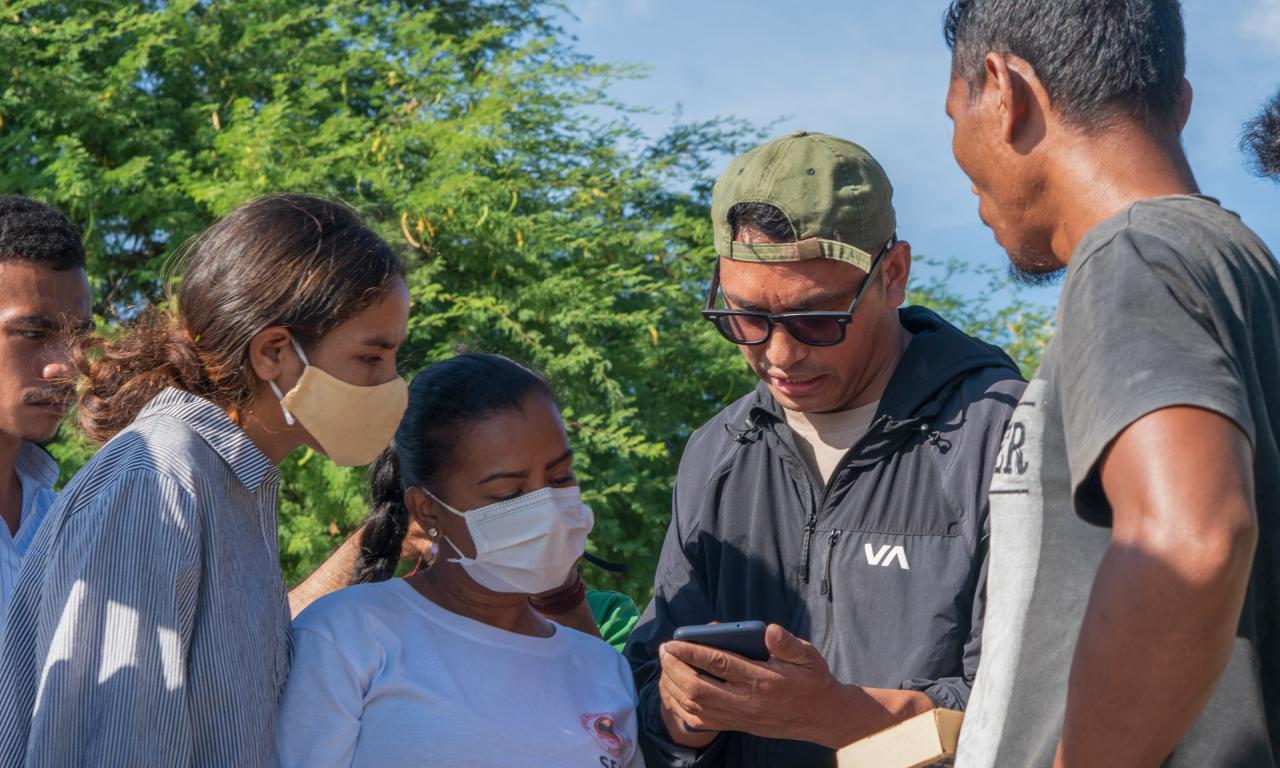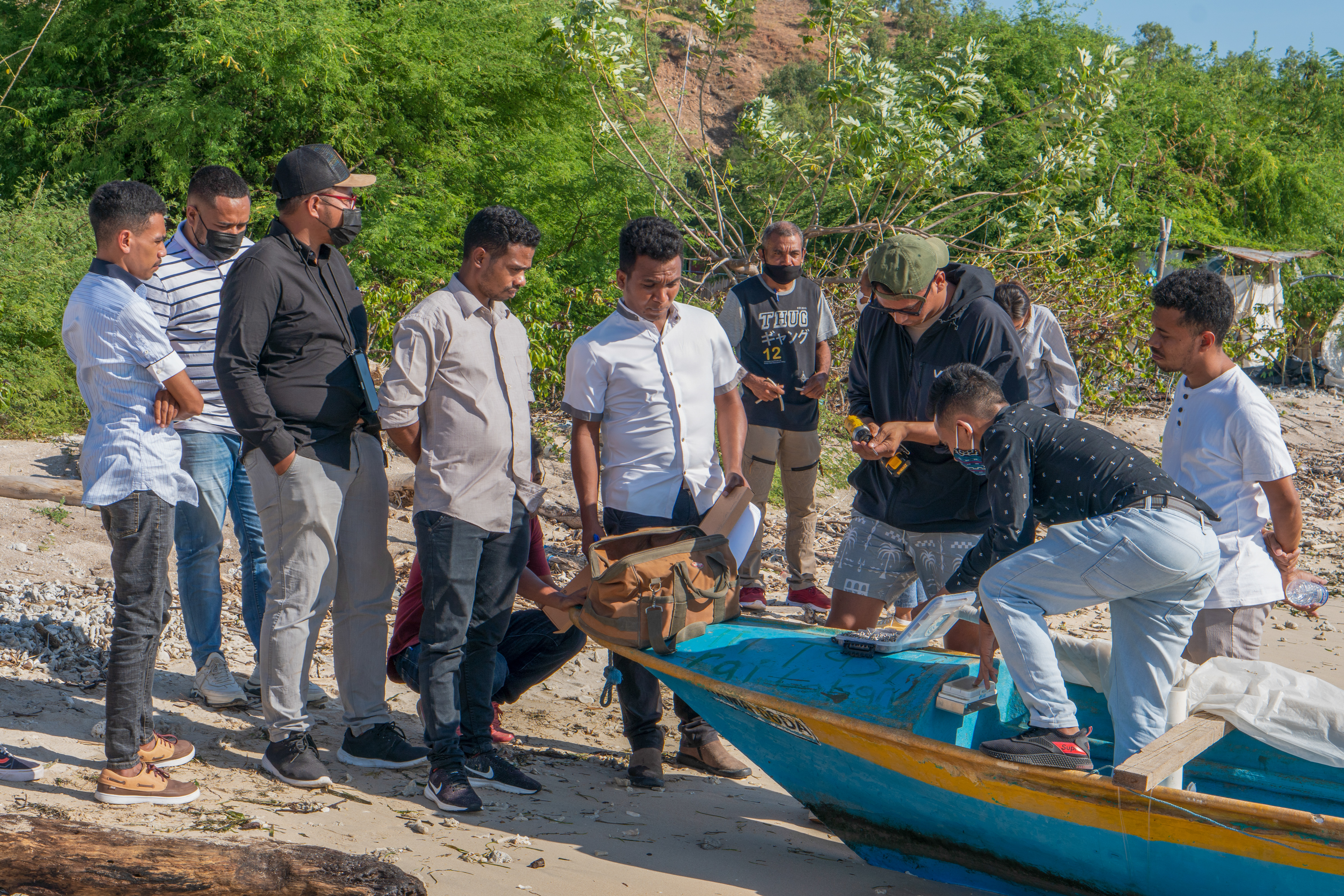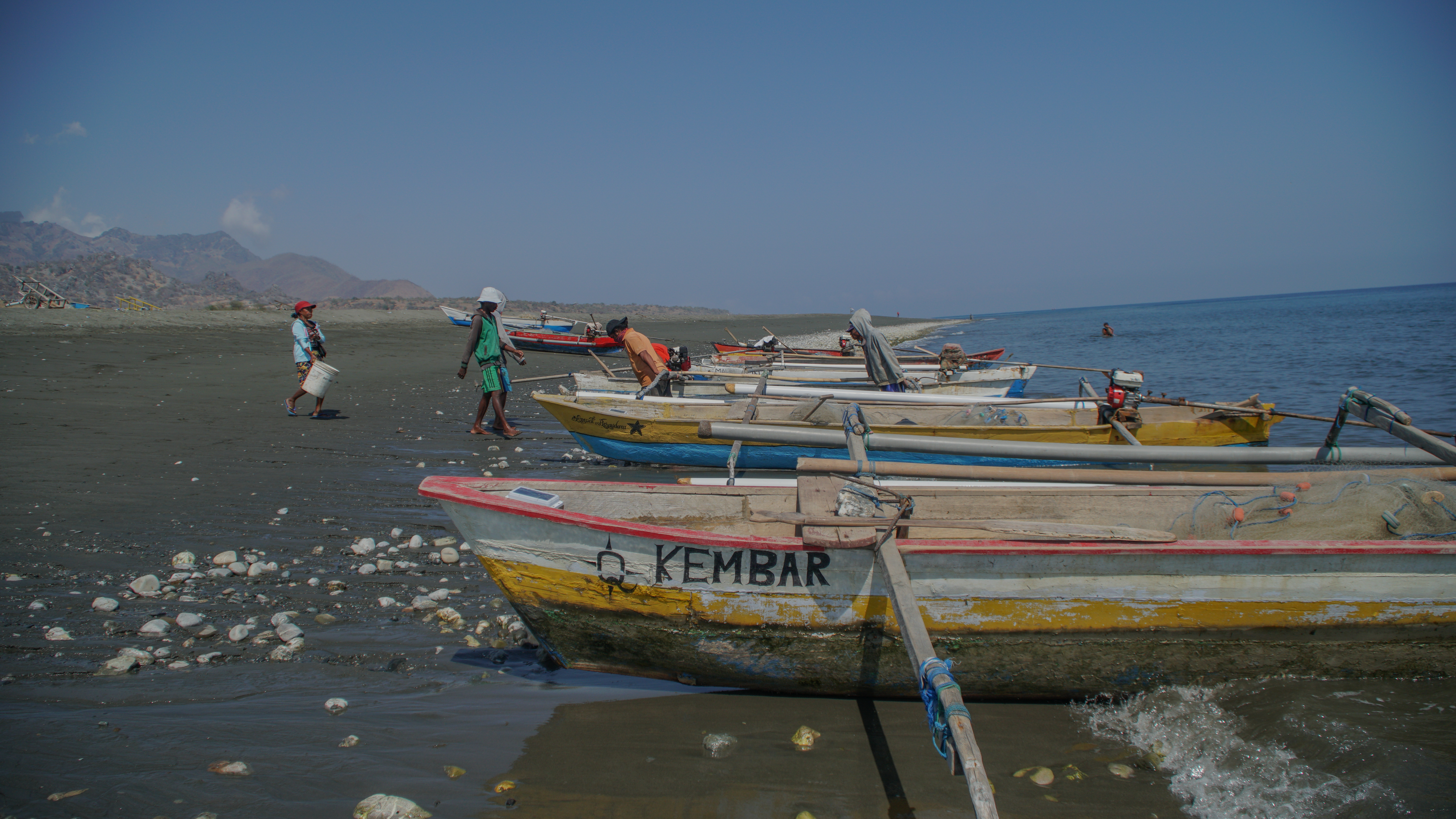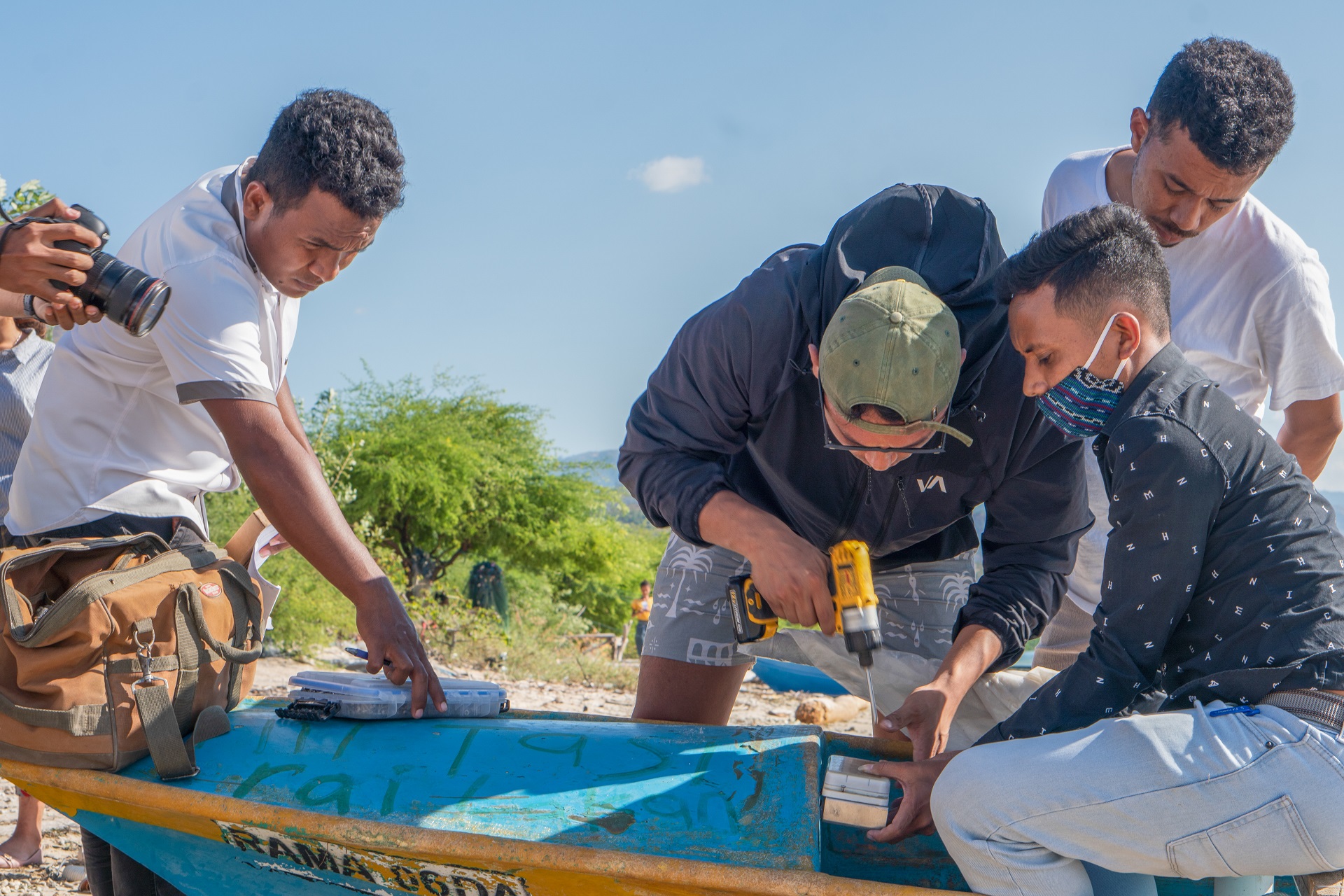
WorldFish's Resilient Small-Scale Fisheries Research Analyst, Joctan Dos Reis Lopes, answers questions on the role of digital innovations in transforming aquatic food systems to be more equitable, inclusive, and accessible to young people in the Pacific.
As the world continues to challenge barriers to achieve a sustainable food future, numerous stakeholders have recognized that social inclusion, a pillar embodied within the 2030 Sustainable Development Agenda, must also be addressed. There is a need for establishing inclusive support mechanisms to restore the planet and protect life collectively, and youth sits at the heart of this global food systems transformation.
As a social group, today's youth are growing with the rapid pace of innovations in technology and digital media. However, they are not just the consumers of these applications but are innovators paving new ways for society to live, work and connect, especially those living in low-resource areas. Thus, youth's engagement in food systems is crucial and must be encouraged.
We virtually sat down with Joctan Dos Reis Lopes, a Research Analyst in resilient small-scale fisheries, for an interview. The Timor-Leste-based researcher shared his perspectives on youth in the Pacific and how digital innovations are transforming their futures in aquatic food systems.

What is the participation of youth in aquatic food systems – fisheries, aquaculture, and associated supply chains and governance – in the Timor-Leste? What are some key opportunities and challenges do they face in the sector?
In the short history of our country, young Timorese people have not been taken seriously. Our culture is heavily influenced by the cultural and traditional importance of elders and their knowledge in guiding the well-being of communities and the nation. There is also tremendous support for veterans of the war for Independence and their vision for a modern Timor-Leste. However, young people have increasingly demonstrated their value, knowledge, and importance in leading and deciding our future over the past decade. As various sectors rely more and more on emerging technologies, the youth keep us aware and engaged in cutting-edge innovations relevant to our nation's development. This is a serious call for the young generation to take full responsibility on their shoulders to carry on the spirit of freedom by unbinding its nation from prominent malnutrition, food insecurity, and rural poverty.
It is a transitional era for Timorese youth—fighting for a brighter future for its nation in adapting and leveraging emerging technologies that can bring positive solutions such as promote equity, inclusion, advocacy, governance, innovation, and science to tackle critical challenges and priorities across the sector. Despite the multitude of challenges youths face in the aquatic food systems, there are opportunities to use big data to provide potential effects in improving well-being, nutrition, and food productionand alleviate rural poverty of unheard and vulnerable communities. Timorese youth has an opportunity to take this trajectory where their strong commitment to applying digital innovations will benefit most of the country's short-term and long-term development goals.
What opportunities do data and digital technologies provide youth in aquatic food systems in the Pacific? Can you provide some examples from your work in Timor-Leste?
The proliferation of information and communication technologies (mobile technology) and associated social networks have changed how we interact. Young people largely drive this, so they are in the best position to leverage digital tools and innovations to improve their lives and those around them. As such, when research, government or business projects rely on novel digital data collection methods, remote reporting, and social networking methods to achieve their outcomes, young people become highly sought-after. This is becoming increasingly evident in sectors such as aquatic foods in small island nations that are traditionally data-poor.
Bringing sustainable solutions to the long-standing data gap in fisheries in Timor-Leste, our research team has been working closely with the Ministry of Agriculture and Fisheries (MAF) of Timor-Leste and a US-based private sector company Pelagic Data Systems to collect and analyze fisheries data through20 data collectors across the country at key landing sites. These enumerators are mostly young people aged in their 30s, from the coastal villages where key landing sites are located. PeskAAS was established in 2016, but now, following its adoption as the national monitoring system for Timor-Leste, MAF is assuming the responsibility of these enumerators going forward.
This is a long-term investment where this digital system provides career opportunities to Timorese youth and puts them as pioneers of this first kind, a sophisticated digital monitoring system for small-scale fisheries in the world. This development of responsibility to youth and acknowledging their value creates reliability, legitimacy, and a sense of ownership of the system at a community level. Better data do not automatically bring about better management, but I strongly believe that this inclusion of youth increases the system's sustainability and lays the foundation for continuing development and improvement of the agriculture sector in Timor-Leste.

With the 'PeskAAS' system technology adopted by the Ministry of Fisheries, how are you working with youth to build digital skills?
I am extremely lucky to work alongside scientists, experts, the Ministry of Agriculture and Fisheries (MAF) of Timor-Leste officers, and the fisheries end-users in the process of co-design/co-development of PeskAAS for nearly four years now. It is challenging but worthwhile to be a young Timorese person who shares the same goal as others in the Pacific but to be in the unique position of being the "person on the ground" to ensure data are collected and curated accurately to bring timely data for timely decision-making in fisheries, but also to mentor government counterparts and raise local capacity.
Breaking the existing bureaucratic structure and tapping into male-elder-dominated governance in governmental institutions like MAF is difficult. Yet, leveraging the youth participation in data collection, MAF stakeholders in the co-design process, and investment in the system is a big win. The success of the PeskAAS is thanks to these key indicators, creating paths for trust, legitimacy, and partnership.
By building youth's data and digital capacity, what opportunities does it create for a wider application of digital tools across aquatic food production, processing, supply, and trade?
The Nobel Prize winning biochemist Albert Szent-Györgyi said,"Innovation is seeing what everybody has seen and thinking what nobody has thought."Many examples of applications for technologies and data approaches in new situations and sectors have only emerged from specific, localized knowledge. By raising the capacity of youth in data and digital approaches, we can foster innovation and entrepreneurship in rural areas to bring new approaches to monitoring, managing, and trading aquatic foods.
New sources of structured and unstructured (big) data bring new insight into old processes. For example, sex-disaggregated information illustrates the critical role that women and youth play in aquatic food production and trade and the vital nutrition security that these foods represent in the diets of coastal communities. Elsewhere in the world, connecting women in rural areas to digital marketplaces and mobile money has enabled the start-up of myriad microenterprises that could otherwise not have been possible. By equipping our youth with the basic skills to collect and interpret data, we can simultaneously give them agency in their own lives and bring about rapid cycles of locally relevant innovation that benefit society.

How can the governments encourage youth-led innovation across the aquatic food systems? How can the increased involvement of youth in aquatic food systems in the Pacific contribute to a food systems transformation toward improved food and nutrition security and equitable livelihoods?
Giving employment, governance, and market/entrepreneurship opportunities to the youth to pilot their science and innovation ideas would be a smart investment of the governments in building a strong pathway to sustainability, at least in Timor-Leste's context. The government needs to have a clear and feasible digital strategy to invest in the national digital capacity building, especially among young women, to decrease the digital gender divide. Some of the key areas of development are programs such as subsidizing vocational courses or diplomas in basic numeracy, coding, social enterprises, and microloans for rural microenterprises. In addition, the governments also need to invest directly in network penetration and lowering the cost of technology and internet for the rural and create friendly-used applications for reporting, e-wallet, and e-payment that are locally relevant and easily adapted.
This should be in line with the governments' strategies, sustainable development goals, and FAO guidelines. These innovations tools and approaches should be economically cheap, open-source, adaptive, and scalable yet provide robust data and information to better identifying the barriers to and solutions to the key challenges across the aquatic food systems.
As a young researcher yourself, what do you see as the benefits of youth researchers working alongside youth to drive innovation in food systems?
Innovation objectives should highlight youth participation as an essential core of investment in food systems as a whole. They can significantly contribute their local and traditional knowledge to advance understanding by enriching the data development and innovation approaches to maximum potential. Having them in the process can be crucial to contributing locally relevant digital applications and tools that provide potential impacts to their communities and nation.
Youth are the catalysts—their perspective must be included in science, technology, and innovations. As many barriers to development efforts, youth groups often become champions that help foster economic development and social progress at all levels in governance and decision-making. This shows hope that capacity building for youth in digital innovations is crucial in ensuring long-term solutions for development efforts across the food systems.